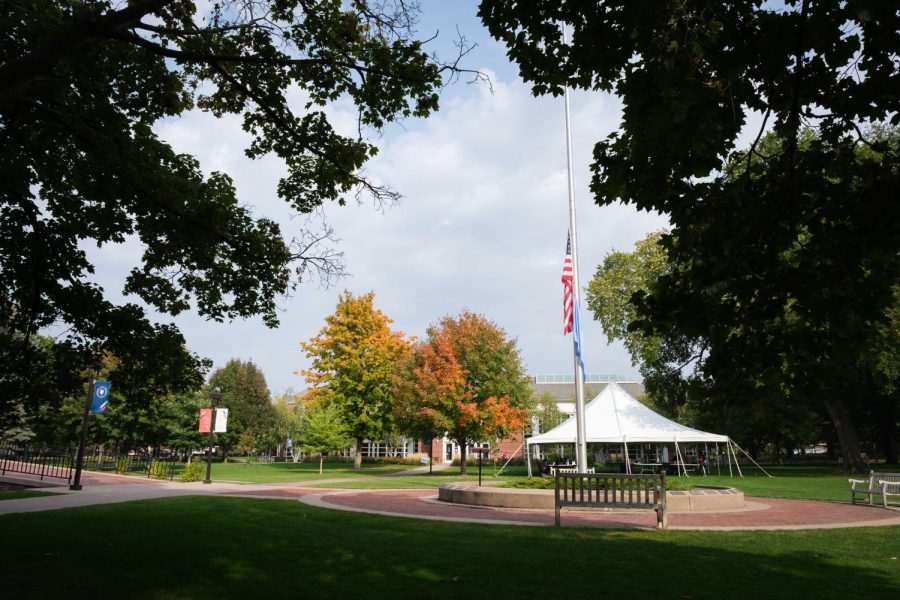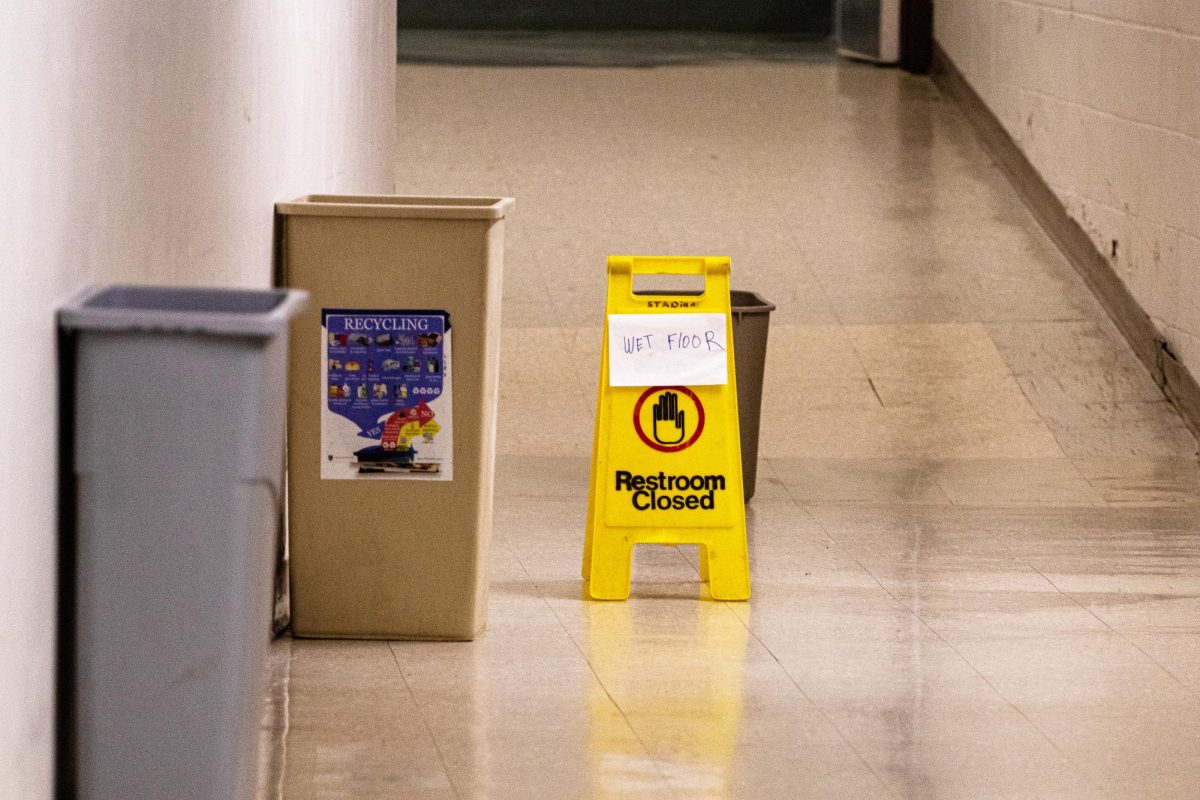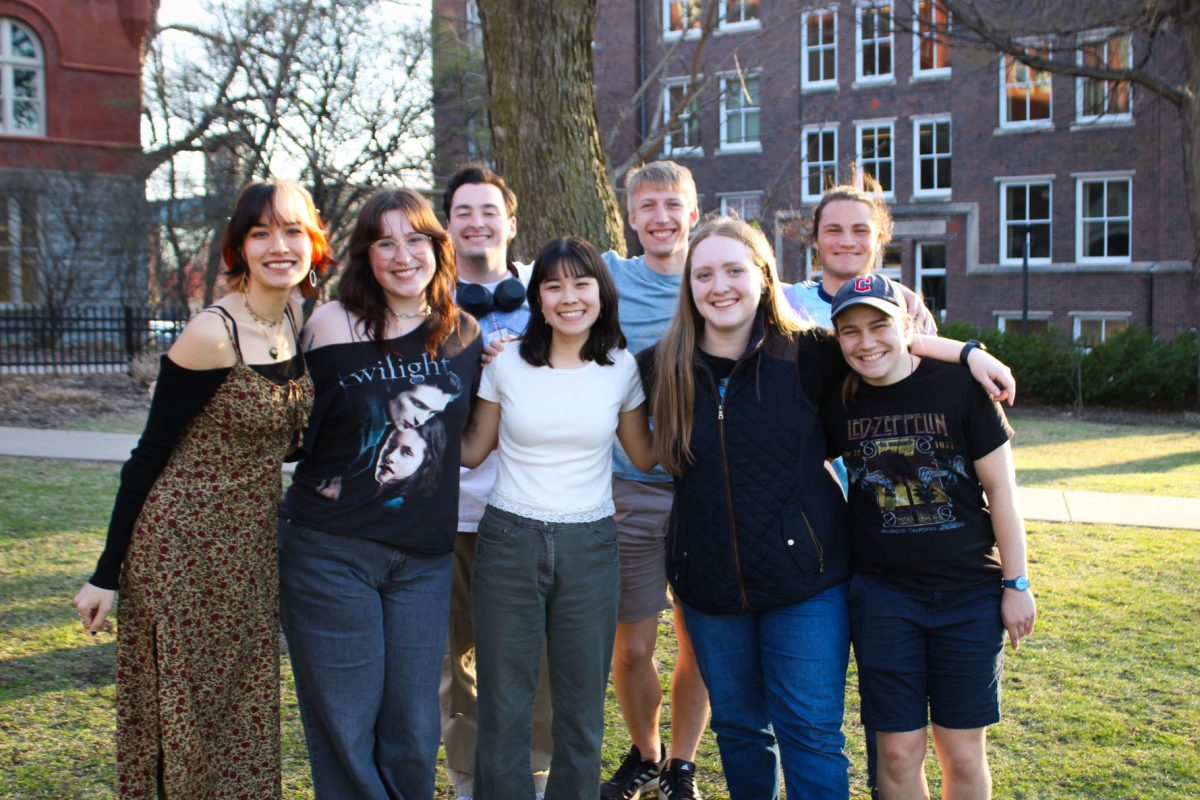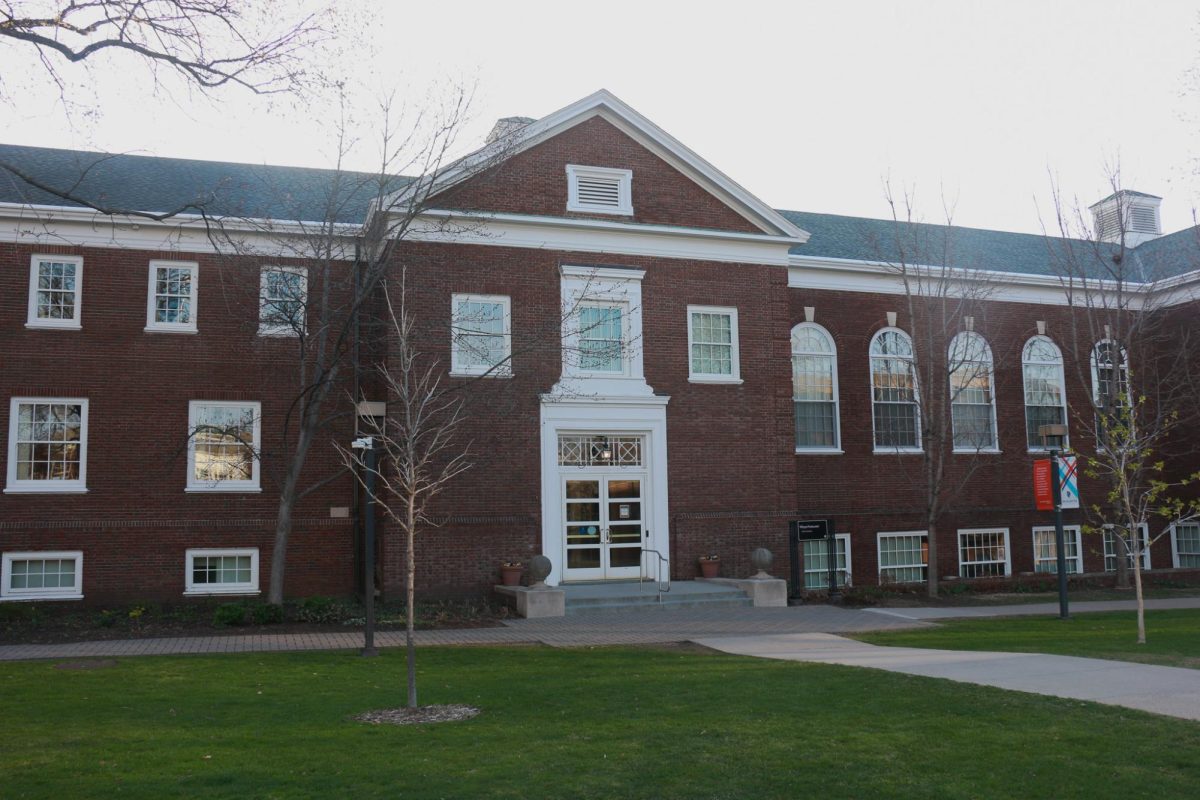St. Paul is beautiful in the fall; the trees flourish with richly colored hues and fallen leaves drift through the wind. But why do the leaves change color? How does it work?
All summer long, trees in Minnesota flaunt an array of green leaves. Pigment molecules in leaves absorb the energy from sunlight striking their surfaces. Leaves store this energy by collecting carbon atoms from carbon dioxide gas in the air and linking them together into rings to make high-energy sugar molecules. This process, photosynthesis, is named for the Greek words photos (light) and synthesis (composition). Sugars are then sent down to the rest of tree through long, thin tubes in the bark. Winter is coming.The trees at Macalester will need a large supply of sugar to survive.
Each leaf holds an array of different pigment molecules. The green color comes from chlorophyll molecules. Chlorophyll in plants is made of fifty-five carbon atoms, seventy hydrogen atoms, a single magnesium atom giving it unique electronic behavior, and several additional oxygen and nitrogen atoms. These atoms are precisely arranged such that the molecule can absorb blue and red light, but reflect green light. This makes summer leaves appear bright green to us.
The beautiful yellow and orange pigments in autumn leaves were there all summer–you just couldn’t distinguish them from the green. All summer, the tree spends energy replacing broken chlorophyll. Rather than work hard to keep replacing chlorophyll, it is more efficient to simply drop all leaves, close off openings where water can escape, and hold tight. As nights get longer and colder, a series of biochemical signals tell the tree that it is time to shut down for the winter. The tree withdraws the sugars and degraded chlorophyll from the leaves into its branches to be used in the spring when new leaves are grown. As the bright green chlorophyll molecules degrade, yellow and orange colors are revealed from other accessory pigments that help with photosynthesis, called carotenes and xanthophylls. New pigment molecules, called anthocyanins, are produced to repel aphids as the leaves die and become vulnerable to pests, making the leaves bright red.
There is one big mystery about leaves that puzzles botanists. It is understood how summer leaves reflect green light, but why they do so is another matter. The sun emits plenty of green light, and any light that is reflected off a leaf can’t be used to store energy. Some biologists believe that this protects leaves from overheating. Others speculate that perhaps the evolution of chlorophyll was a rare and highly improbable miracle, and improvements are so unlikely that they haven’t happened yet. There is no consensus as to why trees have not evolved to use this source of energy. If leaves absorbed all of the light of the sun, they would be black, and clearly they aren’t and they don’t.
Shiladitya DasSarma, a microbiologist at the University of Maryland, recently proposed a new idea, widely known as the “purple earth” hypothesis. DasSarma studies Halobacteria, purple microbes found in extremely salty conditions such as the Dead Sea and the Great Salt Lake. Halobacteria photosynthesize like trees, but they harvest green light and reflect red and blue light. DasSarma speculates that in the early earth, before oxygen was abundant and when the oceans were saltier, the world was covered in halobacteria. Our planet would have been purple when seen from space. Red and blue light was not being consumed by the halobacteria, and new species of green microbes started making chlorophyll to harvest this underused resource. Over time the chemistry of the earth shifted to favor the green microbes, killing most of the purple microbes. Now our planet is covered in green vegetation. It is only a hypothesis, but future studies may reveal more clues.
Regardless of the biochemical mechanisms at play, we can enjoy the contrast of colors colors and beauty of trees in autumn at Macalester College.
Professor Susan Bush, a plant physiologist at Macalester, said, “Macalester has so many beautifully kept plants, it’s really easy to just walk blindly from one end of the campus to the other with just your cell phone…but look around—there is so much going on! Even in the fall! There are so many amazing plant things happening.”
While you were inside stressing over midterms, autumn leaves at Macalester were undergoing complex chemical processes honed by billions of years of evolution. Take a moment to go outside and appreciate them before snow comes.
Curious about science? Want to know how some technology works? Email Sam at [email protected] and your question might be featured in a future column!












Alexander MacDonald • Sep 10, 2019 at 9:55 pm
Generally I do not read post on blogs, but I wish to say that this write-up very forced me to try and do so! Your writing style has been surprised me. Thanks, very nice article.
Hannah Hemmings • Sep 5, 2019 at 1:26 pm
I visited a lot of website but I think this one contains something special in it in it